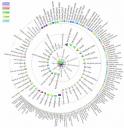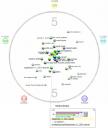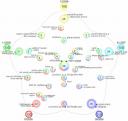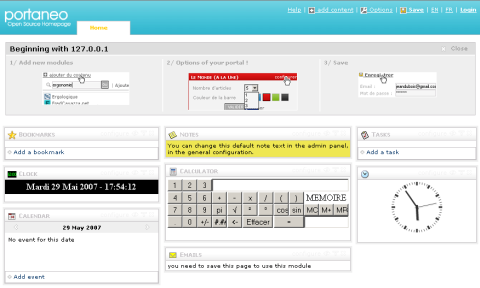Answering this question always takes me 30 seconds – looking for my mobile and doing some pen strokes OR starting Outlook on the laptop and clicking to the desired week (BTW Sunbird is still in version 0.5). Finally I found a solution that gives me a chance for a response within 3 seconds. Continue reading Can we meet on next Tuesday at 2 pm?
Category Archives: Software
So many threads to my data
but fortunately there is a little help. Have you ever been wondered about the power-on time of your hard disk? It’s all there and this utility will reveal it: Continue reading So many threads to my data
Genome Browser Bug
Here I describe a bug in the UCSC Genome Browser display that I found this morning. When locating a SNP on the human genome (where I have only surrounding sequence) I usually do a quick BLAT search Continue reading Genome Browser Bug
NetVibes, Protopage, iGoogle and my own dashboard
Having tried some of these nice web services, I would like to run it now on my own server for obvious reasons. Even after spending considerable time, I didn´t find so much useful out there. eyeOS or other web based OS produce a large amount of overhead while allowing for only one RSS reader window at a time. From the 23 or so widget management systems the only Open Source piece that I found was Posh from Portaneo who deposited at Sourceforge. I wonder why it has only 2,095 downloads so far as all other candidates (Cesar, Viewport, MuseStorm Desktop…) are demo applications only. Widgets for Posh are quite limited so far while the (most important) RSS feed widgets already work.
More useful pages are at gnetvibes.rubyforge.org.rubyforge.org, dev.netvibes.com, reblog.org.
Addendum
Dropthings: another Open Source core engine
Advertising on Pubmed
You don´t believe that? It is possible as you can see here Continue reading Advertising on Pubmed
Delete until 16-May-2008 12:00:00
Süddeutsche Zeitung complains that data are permanently stored but never deleted. Even my irrelevant newsgroup comments have been stored (for 14 years) although they have never been intended to a larger audience. As humans we have no built-in timescale and are not particular good in judging the context of any data. This might be the reason according to SZ that Victor Mayer-Schönberger argues for meta-data when data should be deleted. I agree on this proposal and want this blog entry to be deleted until 16-May-2008 12:00:00 from any server in any world, yea, yea.
The search for the worst sound
There is a nice online study by Trevor Cox on bad vibes which reminds me to a recent comment in Nature: Let the people sing … The most recent development is certainly the digitalorchestraleague postmodern conductors will have game consoles to arrange sound files.
May I introduce to you
Voice recognition has been on the forefront for many years; genetic fingerprinting is standard use while now nearly all surfaces of common products can be recognized by a phenomenon called laser speckle. Continue reading May I introduce to you
Input stream processing
A Spiegel Science article reports
- 1,000,000 bit/s external data stream at the various human organs
- How much of this is actively processed?
And how are unconscious (intuitive?) decisions made? Another mapping attempt at scienceblog:doi:10.1162/jocn.2006.18.12.2077
Inferences for ratios of normal means
The last R newsletter (volume 7/1, April 2007) has a solution to a long standing problem. The new package mratios can deal now with ratios of means of normally distributed random variables and ratios of regression coefficients arise in a variety of ways. For two-sample problems, the package is capable of constructing confidence
intervals and performing the related tests when the group variances are assumed homogeneous or heterogeneous.
Open call to the science blog community for using a DOI in all posts
Science blogs usually refer to a scientific paper. To increase the visibility of science blogs, e.g. for a reverse lookup by search engines like “find all science blogs to a particular paper” it would be useful if science blogs would include a defined tag to which paper they relate. A http link will only partially work as single articles may be found at duplicate sites (journal or the publishers site or even through agencies like OVID and PUBMED CENTRAL). Using the DOI identifier is an alternative. To recognize any source document I therefore propose the following (unofficial) IANA scheme to be included somewhere in the body of your post
scienceblog:doi:10.1371/journal.pmed.0040072:
If there is no DOI available, I propose to use the link instead
scienceblog:http:www.thelancet.com/journals/lancet/article/PIIS014067360209654X: Please note that there should be an extra “:” at the end of the string; alternatively you may use a white space.
Addendum
05.05.2007 Automatic DOI number extraction from blogs following this convention is now available at the Science Blog Finder page – just enter you rss feed address to get your blog indexed every 24 hours.
Search for crystals
First monday has an interesting paper on the 100 most visited Wikipedia pages for the period of September 2006 to January 2007 (Wikipedia is the ninth most visited site in the U.S. with 43 million visitors). The crystal search link in the paper does not work but the table reports that science ranks at place 5 – not too bad.



Thunderbird 2.0.0.0 RC1
A new major release of my favorite software is definitely worth another entry here. Besides many other features there is now a new function to add tags to emails – quite important if you need to assign emails to different projects. Furthermore (virtual) search folder are now cached for speed, many thanks, yea, yea.
A patch of the patch of the patch of the …
Following the last Microsoft patch day, my laptop started with this quite unusual error message Continue reading A patch of the patch of the patch of the …
More on plagiarism
When getting important documents for review I usually check them for plagiarism. One of the best address seems docoloc – try it out, they have Continue reading More on plagiarism
